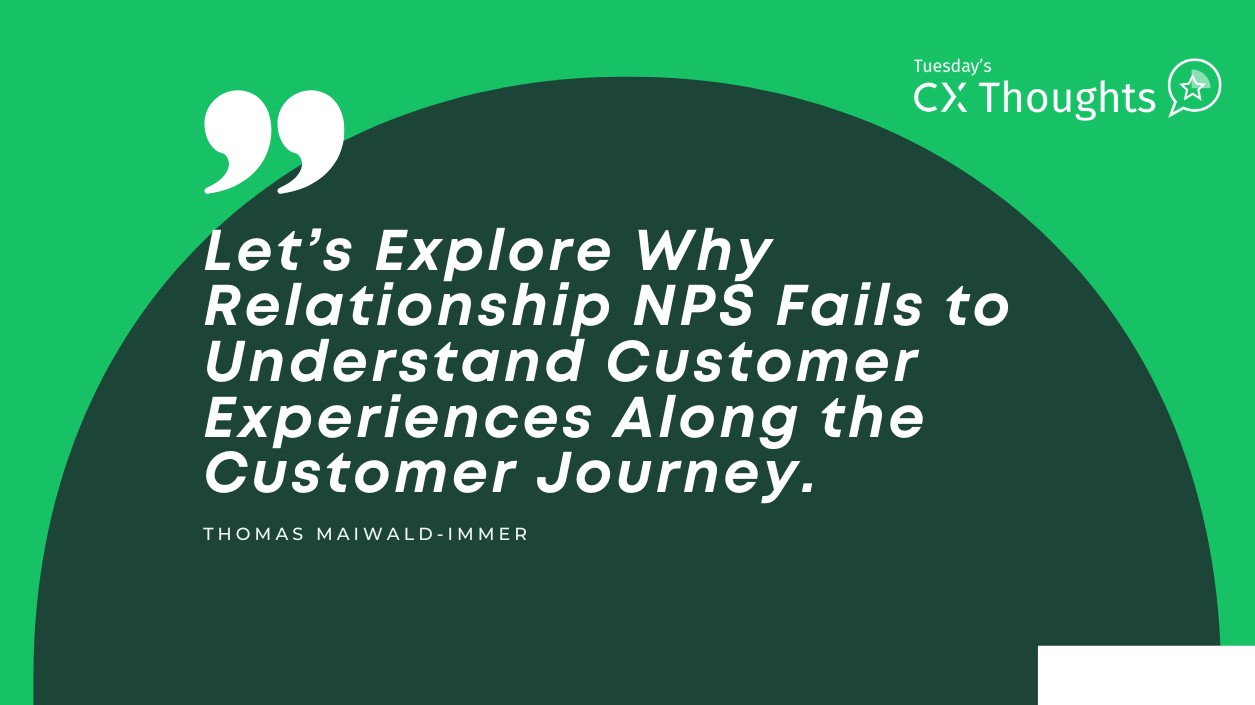
The Net Promoter Score (NPS) is a metric system that measures customer satisfaction and loyalty. There are two main types of NPS: Relationship NPS and Transactional NPS. The primary difference lies in the timing, context of the survey, and the purpose of the measurement. Here are the differences in detail:
Relationship NPS (rNPS)
- Purpose: Measures overall customer satisfaction and loyalty towards the company.
- Timing: Conducted at regular intervals (e.g., quarterly or annually), independent of specific interactions.
- Context: Pertains to the customer’s overall experience with the brand or company.
- Question: “How likely are you to recommend [Company] to a friend or colleague?”
- Goal: Identify overarching trends and long-term changes in customer satisfaction and loyalty. This helps in making strategic decisions and improving overall customer retention.
Transactional NPS (tNPS)
- Purpose: Measures satisfaction and loyalty based on a specific transaction or interaction.
- Timing: Conducted immediately after a particular interaction (e.g., after a purchase, a service call, or a support request).
- Context: Relates to the customer’s satisfaction with a specific experience or transaction.
- Question: “How likely are you to recommend [Company] based on your recent experience?”
- Goal: Detect short-term issues or successes and provide immediate feedback on specific interactions. Helps in making operational improvements and optimizing immediate customer experiences.
Thus, while the Relationship NPS provides insights into general customer satisfaction and loyalty, considering the entire company and conducted periodically, the Transactional NPS focuses on specific interactions or transactions, provides immediate feedback, and is measured right after the relevant experience. Both types of NPS are valuable and complement each other by offering both long-term and short-term insights into customer satisfaction.
As described above, the Transactional NPS (tNPS) is an essential tool for measuring customer satisfaction at specific touchpoints along the Customer Journey. Here are the details on how the tNPS relates to the Customer Journey and how it is integrated into a Closed-Loop Feedback Process:
Transactional NPS in the Customer Journey
Touchpoints in the Customer Journey
- Awareness: The phase where customers discover the company or product.
- Consideration: The phase where customers consider and compare different options.
- Purchase: The purchasing process and the actual transaction.
- Delivery: The delivery or provision of the product or service.
- Usage: The phase where customers use the product or service.
- Support: Customer support and service after the purchase.
- Loyalty: The phase where customer retention and loyalty are strengthened.
In each of these phases, transactions or interactions can occur, which can be evaluated using tNPS measurements.
Importance of tNPS in the Customer Journey
- Identifying Issues: By measuring tNPS at various touchpoints, companies can identify specific problems or pain points in the Customer Journey.
- Improving Customer Experience: Immediate feedback allows targeted actions to improve the customer experience at critical points.
- Increasing Satisfaction: Companies can increase customer satisfaction and loyalty by responding to feedback and adjusting.
We also recommend reading: Transactional Vs Relational NPS: Understand the Differences
Closed-Loop Feedback Process with tNPS
What is a Closed-Loop Feedback Process?
A Closed-Loop Feedback Process ensures that the collected customer feedback is not only gathered but also analyzed and used to improve products, services, and processes. This process closes the loop between collecting feedback and implementing improvements.
Steps in the Closed-Loop Feedback Process with tNPS
- Collecting Feedback: Customers are surveyed immediately after a transaction or interaction to measure their satisfaction.
- Analyzing Feedback: The feedback is analyzed to identify patterns and common issues. This can include both qualitative and quantitative analyses.
- Responding to Customers: Customers who provided negative feedback are contacted to address their issues and offer solutions. This shows customers that their feedback is taken seriously and often leads to higher customer satisfaction.
- Implementing Improvements: Based on the analysis, concrete actions are taken to address identified problems and improve the customer experience.
- Monitoring and Iteration: The process is continuously monitored, and feedback is regularly collected to ensure that improvements are effective and to identify new issues early.
Integrating Insights Back into the Customer Journey
- Adjusting Processes: The insights gained are used to adjust and optimize processes at critical touchpoints.
- Employee Training: Employees are trained based on feedback results to better meet customer needs.
- Product and Service Improvements: Products and services are further developed to better meet customer requirements and expectations.
- Communicating with Customers: Proactively communicating with customers about changes and improvements shows that the company is customer-focused.
Conclusion
The Transactional NPS is a powerful tool for continuously improving the Customer Journey. By integrating it into a Closed-Loop Feedback Process, companies can ensure that they identify problems and respond effectively, thereby increasing customer satisfaction and loyalty in the long term.
How can SuiteCX by QuestionPro help you improve your customer experience?
Our customer journey mapping software can help you improve your customer experience in many ways. You can create and visualize your customer journey, identify pain points, and develop solutions that optimize interactions to increase satisfaction.
QuestionPro CX tracks customer interactions across multiple touchpoints, including our website, social media, and customer service channels.
Easily visualize your persona-based journey with the most powerful customer journey mapping software on the market.







